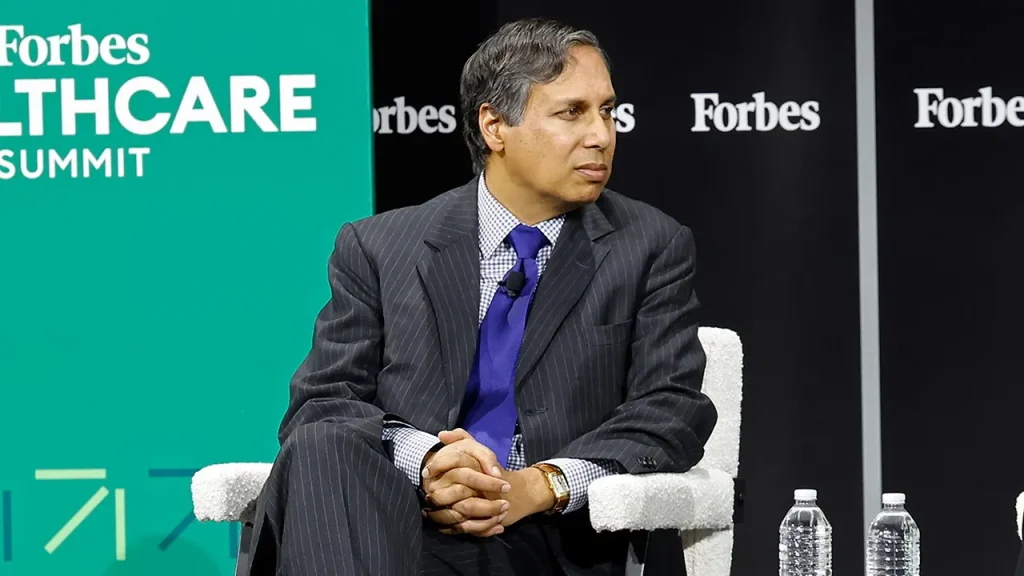The Healthcare Debate: Beyond the Shutdown Standoff
The ongoing government shutdown, now in its 24th day, has brought healthcare subsidies to the center of a contentious political battle. While Democrats and Republicans remain locked in disagreement over the future of Obamacare subsidies, healthcare policy expert Avik Roy—an early critic of the Affordable Care Act—offers a nuanced perspective that challenges both parties’ approaches. “Both sides are wrong,” Roy asserts, suggesting that while he sympathizes with Republican fiscal concerns, their strategy misses the mark on addressing the fundamental issues within America’s healthcare system. The debate centers on temporary COVID-era expansions to insurance subsidies that dramatically widened eligibility for federal assistance with Obamacare premiums. Originally, subsidies were capped for anyone making over 400% of the federal poverty level, but in 2021, Congress temporarily removed this cap as an emergency pandemic measure. With these enhanced subsidies set to expire at the end of 2025, Democrats are pushing for their renewal while Republicans argue for letting them expire to control government spending. The stakes are high—over 90% of the 24 million Obamacare enrollees currently utilize these expanded credits, and their expiration would lead to substantially higher insurance costs for millions of Americans.
Interestingly, Roy doesn’t view the subsidies themselves as problematic. “The subsidies aren’t inherently the problem,” he explains. “If you want low-income people who are near the poverty line to have insurance, you’re going to have to subsidize.” In fact, he argues that the approach to subsidies under Obamacare was “actually pretty reasonable,” noting that subsidies have been components of both Republican and Democratic healthcare plans throughout history. Roy’s key insight is that the subsidies represent a symptom rather than the cause of America’s healthcare challenges. The real issue, in his view, is the underlying regulatory framework that drives healthcare costs skyward. Instead of simply battling over whether to extend subsidies, Roy suggests Republicans should negotiate a deal: extend the subsidies for existing enrollees for one to two years in exchange for permanent fixes to the costliest Obamacare regulations that are inflating healthcare prices. This approach would address both immediate concerns about coverage affordability and the long-term sustainability of the healthcare system.
The cost disparity between American healthcare and other developed nations highlights the magnitude of the problem. Roy points out that in Switzerland, comparable health insurance plans cost $200-300 per month, while in America, the same coverage might cost $1,000-1,500 monthly. When costs are so dramatically higher, subsidies naturally become expensive as well. However, Roy supports the concept of gradually reducing subsidies as income increases, noting that this sliding scale approach is sensible policy. The fundamental question isn’t whether to subsidize but how to address the regulatory and structural factors that make American healthcare so exceptionally expensive in the first place. Without tackling these root causes, debates over subsidy extensions merely address the symptoms of a broken system while leaving the underlying disease untreated.
Looking back at recent reform efforts, Roy praises the Trump administration’s attempts to reduce underlying healthcare costs, particularly through the “most favored nation” strategy for pharmaceutical pricing. This approach leveraged international price comparisons to negotiate lower drug costs in the U.S., essentially requiring pharmaceutical companies to offer Americans prices comparable to the lowest they offer in other advanced economies. “I think that’s eminently reasonable,” Roy says of this negotiation framework, suggesting that such market-based approaches could help bring American healthcare costs more in line with international norms. This perspective highlights a potential middle path that acknowledges the need for government intervention while still prioritizing market forces and competition to drive down prices.
The current political standoff appears far from resolution. Republicans maintain that the enhanced premium tax credits are unrelated to government funding and have rejected Democrats’ demands to address them as a condition for ending the shutdown. The Senate has voted on a short-term funding bill twelve times since the shutdown began, with no breakthrough in sight when lawmakers left Washington last week. As they return to the capital, the pressure to find a compromise solution grows, but the path forward remains unclear. This impasse illustrates the deep philosophical divide in American healthcare policy—between those who view expanded government subsidies as necessary for ensuring widespread coverage and those who worry about the fiscal sustainability and market distortions of such approaches.
Roy’s perspective suggests a potential third way that acknowledges legitimate concerns from both sides of the aisle. By focusing on the regulatory factors driving healthcare costs rather than just debating subsidy levels, policymakers could potentially address both coverage and cost concerns simultaneously. As the shutdown continues and Americans face uncertainty about both government services and future healthcare costs, this more holistic approach to healthcare reform might offer a path out of the current deadlock. The question remains whether political leaders can move beyond partisan positioning to engage with these more fundamental healthcare system challenges—challenges that will persist long after the current shutdown is resolved, regardless of its immediate outcome on subsidy extensions.


